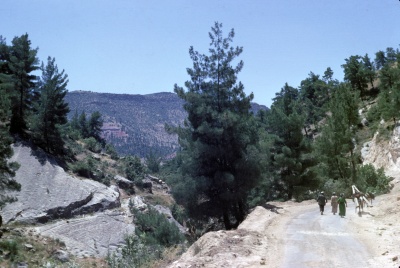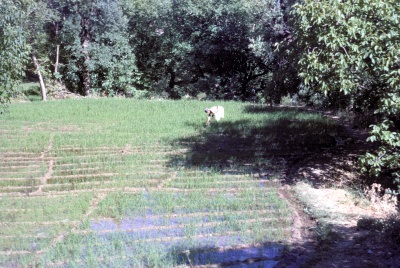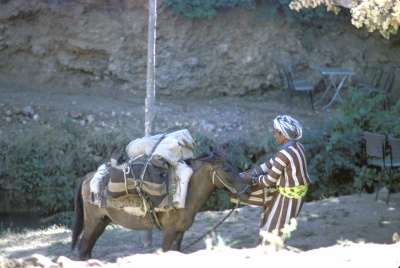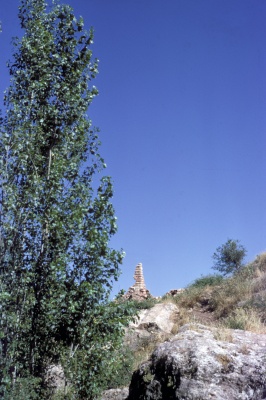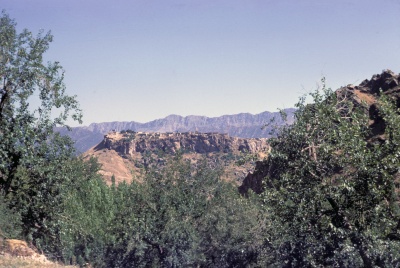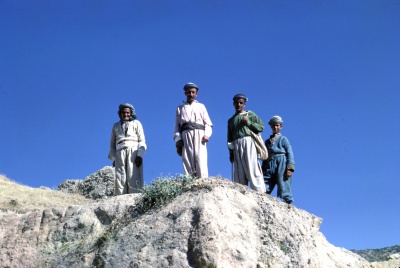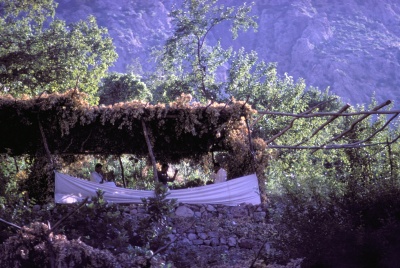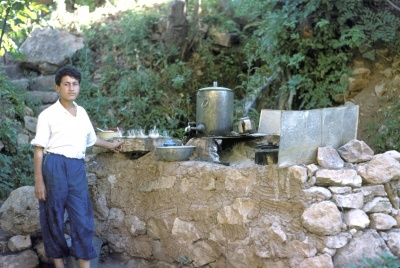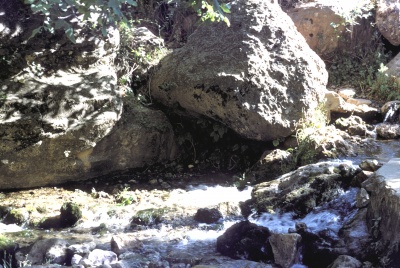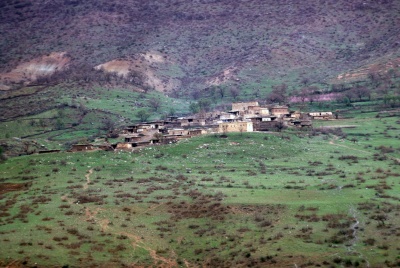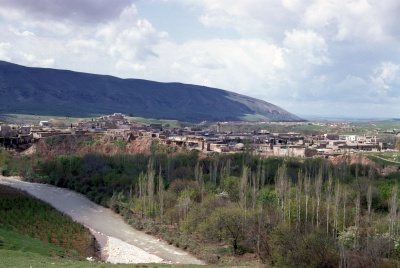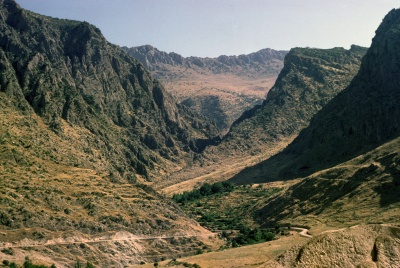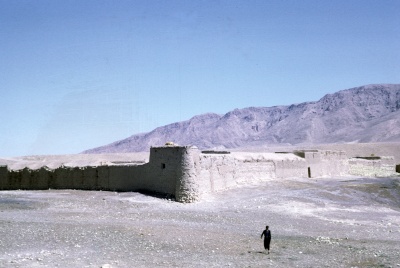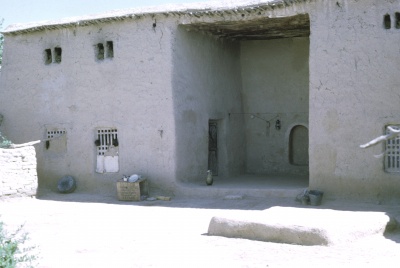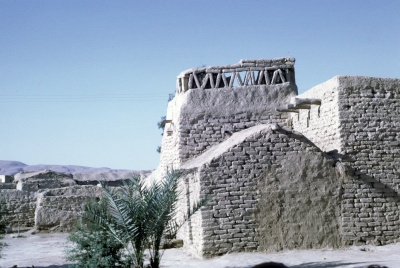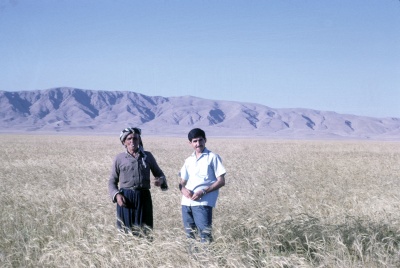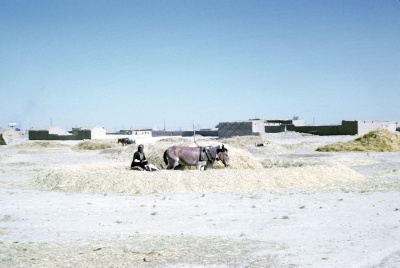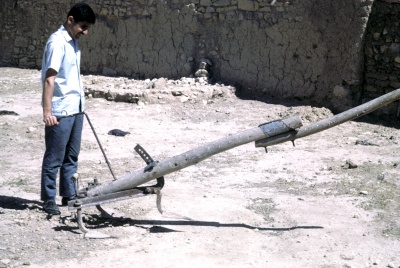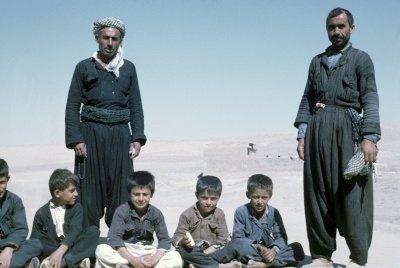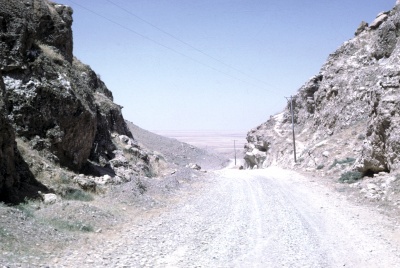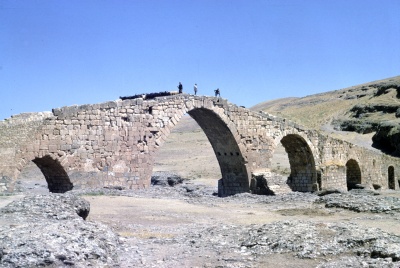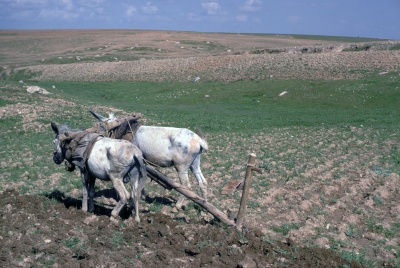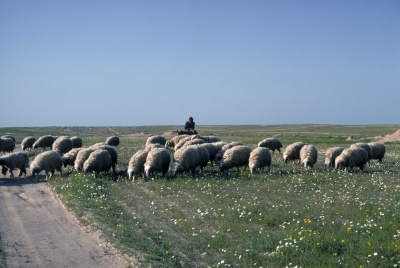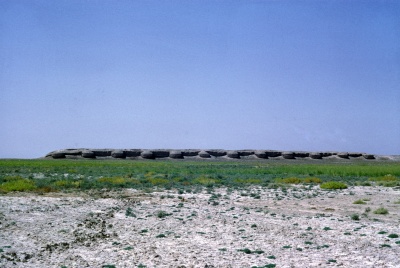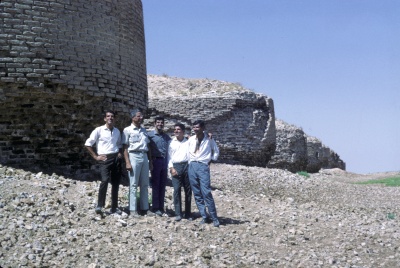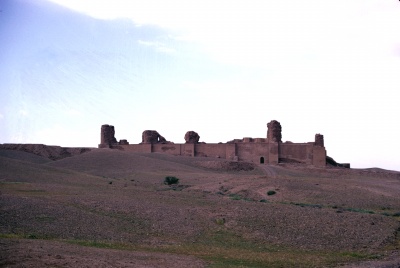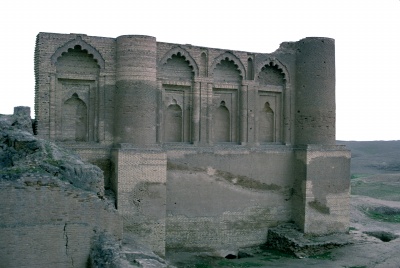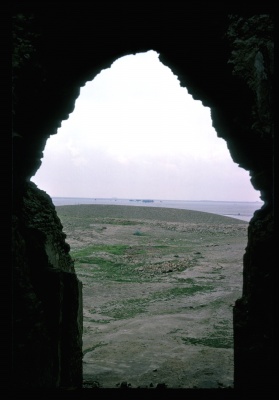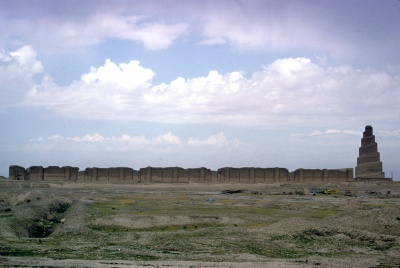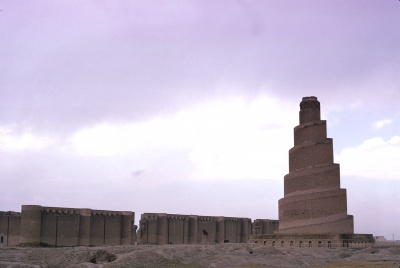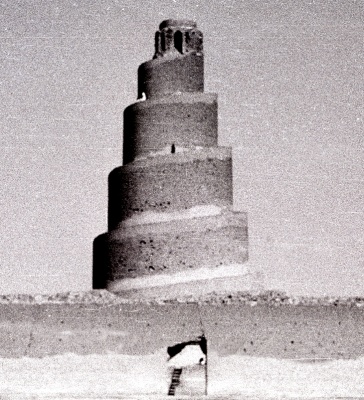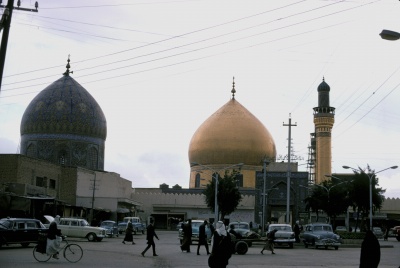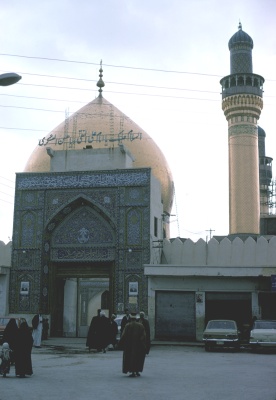3.1.1 Amadia
Trip to Amadia North Kurdistan July 1968 with my colleagues/counterpart Hamid and friends Petrus and Paulus. Amadia is 150 km North of Mosul, located at about 1 000 above sea level on a steep rock. Amadia is a small market town for the local Kurdish farmers selling their produce. It has a nice cool climate with maximum summer temperatures of 30 C, while during winter Amadia is snow covered. In spring the valleys are covered with millions of bulb flowers, like tulips, crocus and narcissi. The valleys with all the spring flowers are like a beautiful Persian carpet. Kurdistan is actually the genetic centre for these bulb flowers. It is from here that a Dutch ambassador in the 17th Century took some tulip bulbs to Holland, which started the Dutch spring flower industry. Note that Kurdistan during the Turkish area 1650 1918 was located in the Mosul province of Turkey.
Life is simple and beautiful in Amadia. As elsewhere in Iraq in summer people sleep in the open air. Here are pictures of the simple Amadia guesthouse with open air rooms and dining area, in which I stayed with my Iraqi friends.
Unfortunately already during the 1960s there were serious frictions and uprisings of the Kurds against the Iraqi government. Later the Kurdish uprising was continued during the Baath period under Saddam Husein. Kurds felt badly discriminated in the Sunni Arab led country. The Iraqi army already in the 1960s terrorized Kurdistan regularly. On image shows the ruins of a farm house destroyed by the Iraqi army.
Near Amadia is the famous Shanidar cave, in which in 1951 Dr Solecki, University of Michigan, discovered remains of four Neanderthal man, from approx. 120 000 BC.
3.1.2 Duhok
Duhok is a small Assyrian village 50 km North of Mosul, located at 800 m above sea level. My servant Daniel was also an Assyrian. Assyrians are Christians. Their main occupation is in agriculture and rice is the staple food. The rice is grown on rain fed bonded fields – comparable to rain fed sawahs
3.1.3 Makhmur
During June 1968 I made a trip to Makhmur the home town of my colleague Hamid a Kurd. Makhmur is located 50 km due east of Shirgat/Tel Assur. To reach Makhmur one has to cross the river Tigris with a small ferry.
Hamid’s father owned a large farm, growing barley and wheat, raising livestock: sheep and poultry and growing fruits. For pulling his ploughs and threshers he used pairs of donkeys. The farm complex was huge with many family rooms, storages and stables. All rooms were centered a round a main inner courtyard. In addition there were outer courtyards to receive guests and where family meals were taken. The roofs of the rooms were used as open air bed rooms. I also slept on one of these and found it a pleasure to sleep in the very refreshing night temperature, watching thousands of stars.
Walls and roofs of the farm buildings were all made from mud plaster, a mixture of soil and straw. Construction of the buildings was simple, but effective. Due to nature of the material walls and roofs crumble easily and need regularly to be re plastered with a fresh coat of the mud mixture.
The Kurdish minority in Iraq, which consists of about 20% of the population, is often seriously discriminated by the Sunni authorities, who claim that the Kurds are undisciplined trouble makers. During my stay my Kurdish hosts made serious efforts to explain the Kurdish position. Actually they hoped one day for an independent Kurdish country.
On the Sunday we also visited a nearby tell, one of the many hundreds of tells in Iraq. A tell looks like a small hill. Actually each tell in Iraq is a man made hill and covers the ruins of one or more old cities. Of these hundreds of tells, so far only a hundred or so have been excavated, mainly those tells, which covered former capitals or major cities. The Makhmur tell has not been excavated as it was probably only a minor Assyrian town from the 1st or 2nd millennium before Christ.
3.1.4 Zakho
Zakho is the main town of the Armenian minority in Iraq. Armenians are also Christians
In Zakho one can visit a famous bridge from the Abbasid period 700- 1258 AD.
3.1.5 Sassanian Castles
Ruins of two castles from the Sassanian period 100-200 AD are located North of Tikrit.
To date I have not been able to identify much information on this period.
3.1.6 Samarra
Samarra, is located about 100 km North of Baghdad, along the river Tigris. Samarra was established in 836 AD by caliph Mutasim, who moved the capital from Baghdad to Samarra.
Samarra was probably the most magnificent city ever built by Muslims. Travelers reported that there were many beautiful large palaces and mosques in Samarra during the Abbasid period. All these palaces were constructed with unfired bricks. During the Mongol invasion in 1258, Samarra was destroyed and today practically nothing remains of these glorious buildings. To day only the famous Friday mosque, Al Mutawakkil remains, as it was built from fired bricks and stone blocs. The Friday mosque is famous for its spiral minaret. One ascends this by an external spiral staircase that gave the structure its name: Al Malawiya – the winding tower. The Friday mosque is one of the largest mosques ever built, 200 m by 130 meter with walls of over 10 m high. Its plan follows the Umayyad period and was organized around a large open courtyard.
Apart from the Friday mosque one can visit in Samarra the tombs of the apostolic Imams Al Ah Hadi and Hasan Ashari from the 12th century and the mausoleum of the 12th and last apostolic Imam Al Mahdi built during the 13 the century .
